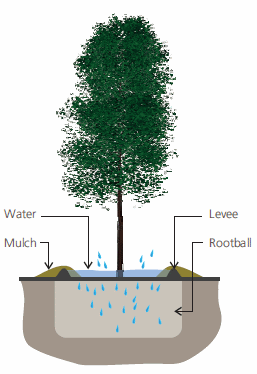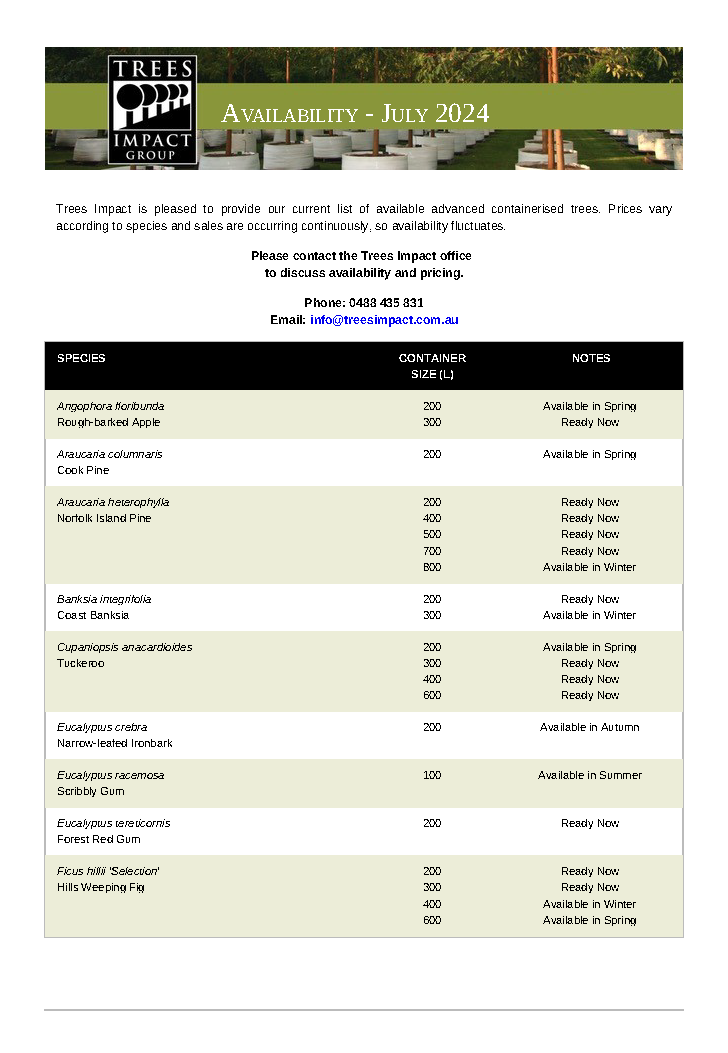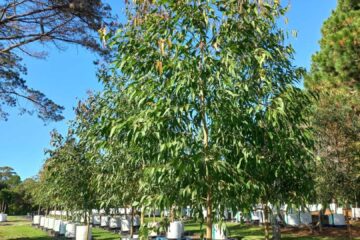Make Sure Your New Trees Thrive
After being planted (carefully), the single most important need of a newly-planted tree is to receive adequate moisture.
WATER MUST BE CONCENTRATED ON THE EXISTING ROOTBALL
- A newly-planted tree can only access moisture that is within its rootball.
- Eventually it will send out new roots into the surrounding soils and gradually become self-sufficient. But, until then, it needs help.
- Moisture will not flow from wet surrounding soils back into the rootball. So, watering must concentrate on wetting the rootball itself.
- The best and simplest way to deliver moisture into the rootball is via drippers placed directly on top of the rootball and connected to an automatic irrigation system.
- If irrigation is available but not automatic, someone must be assigned to operate manual systems regularly during the first 6 to 12weeks (at a minimum and depending on the season).

- If no irrigation is available and hand watering is necessary, a sturdy levee that will retain water must be built (and maintained) around the edge of the rootball of each tree.
- The pond created within the levee should be regularly filled with water.
- But gently! Strong jets from hoses and water trucks actually deliver less useable water and wash away the levees.
- Do not rely on general garden sprinklers or underground systems until the tree is clearly established.
- Do not stop watering in the event of rain. It might wet the ground but, unless heavy and/or prolonged, rain normally will not deliver adequate moisture to the rootball.
- Water loss can be reduced and soil conditions improved by adding an organic mulch to the area on top of and adjacent to the rootball. (But, make sure that this mulch is not heaped up against the stem of the tree).
- Monitor the trees for signs of wilt as part of the initial maintenance programme. Adjust watering levels accordingly.
SEASONAL CONSIDERATIONS
- Trees establish more readily in autumn than in spring or summer.
- With autumn planting, the period when concentrated attention must be given to trees will be shorter than in spring or summer – maybe as little as 6 weeks, after which watering may be reduced.
- Trees planted in spring, particularly late spring, are trying to establish as they enter the harshest time of the year.
- In the case of spring or summer plantings, longer nursing and greater vigilance are essential.
These recommendations assume the trees are planted correctly into sites with good
drainage.

